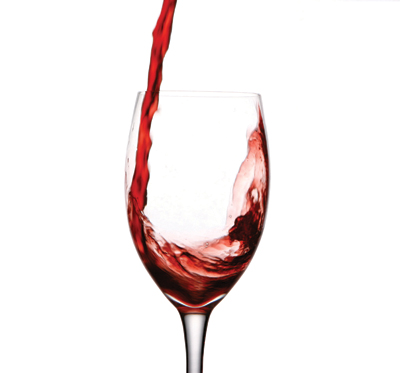
It’s no secret that when the rest of the world thinks of Texas, they often envision the sterotypes- belt buckles, beef, and a tasty bottle of…wine?
Okay, not yet, but we’re getting there. Although winemaking in Texas has been around for over 350 years, modern wine making in the Lone Star State is relatively new. Its history dates back to 1970, when commercial viticultural practices were beginning to take root, so to speak. However, the last decade has really seen a growth spurt in the Texas wine industry and it doesn’t seem to be slowing down anytime soon.
In 2001, our wine industry was given a significant boost when state legislators passed House Bill 892, “The Texas Wine Marketing Assistance Program,” which originally designated $500,000 for two years of wine marketing to the Texas Department of Agriculture. The program proved to be a successful endeavor, because in 2005, the stipend leaped to five million. Since the creation of Go Texan Wine, the catchy moniker for the TDA marketing program, the public as well as winery insiders have direct access to information and education under one roof. Not to mention, part of the budget is allocated to yearly grape-growing grants to improve practices and increase viticultural acreage. The state stands at 5th in the nation as far as production goes, and has grown to a $1.35 billion industry, visible in the explosion in the Texas winery count: from 42 in 2003 to over 250 currently. Much has been accomplished in the last decade; however, it’s only the dawn of a new era.
Like the proud Texans we are, first on the agenda for our vinicultural future is to take pride in our state. Our climates and soils differ immensely even intrastate, let alone from the rest of the country, so why try to imitate those regions? For the sake of producing premium wine, winemakers are making bold moves to honor the grapes that do well here by experimenting with multiple varietals. Grapes with French origins such as Cabernet Sauvignon, Merlot and Viognier aren’t new to our state’s vineyards, and are increasingly joined by vines that hail from the warmer climates of Italy and Spain such as Tempranillo, Vermentino and even Madeira. Instead of planting varietals that only flourish in cool climates, growing grapes that are symbiotic with our state’s warm temperatures is a necessity for producing high-quality wine. Makes sense, doesn’t it?
From the Red River to the Rio Grande, Texas vino is also becoming more accessible to consumers. As entertaining as it may be, no longer are you required to take a trip to the winery to purchase bottles because many local supermarkets have designated a separate Texas wine section on their shelves. If Whole Foods, Specs, Central Market and even Fiesta carry an expansive array of Texas wine, it’s because they recognize the bright future of the industry here. The Park Lane and Highland Park Whole Foods in Dallas even goes as far as carrying Texan wine on tap, a Vermentino and Montepulciano, both from award-winning Duchman Family Vineyards in Dripping Springs. At last summer’s San Francisco International Wine Competition, Duchman came home with a double gold medal for their 2008 Dolcetto, and they’re not the only Texan winery with bragging rights. Becker, Bernhard, Haak, McPherson and Flat Creek, to name a few, have all been making waves at contests from coast to coast, bringing well-earned attention to the Lone Star State’s wine industry. Staying true to the Texas spirit, our state has taken the bull by the horns, and is aggressively constructing a solid wine industry here. We Texans eagerly embrace a good challenge and the progress that’s been made over the last decade is proof that we’re on our way to building a noteworthy name for ourselves in the expansive world of wine. Equally graced by our deep vinicultural past as well as our optimistic can-do attitude, it won’t be long before our state is globally recognized as a veritable wine-making powerhouse. So, my fellow proud Texans, tip your hat and raise your glass to the prosperity and posterity of the Lone Star State of Wine.























